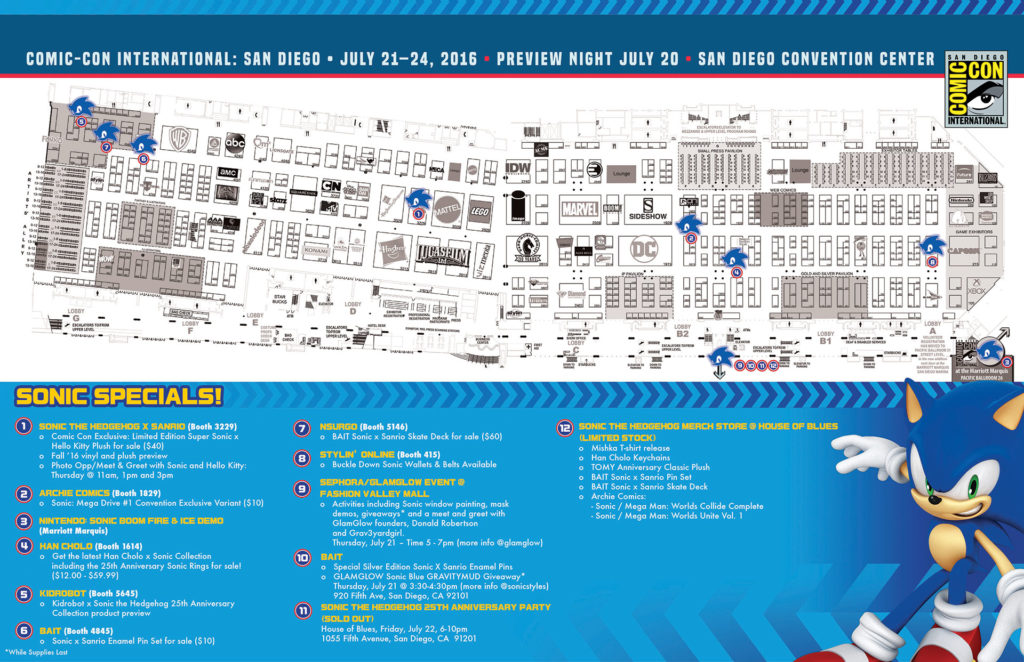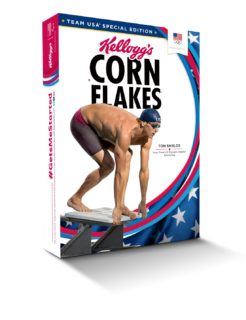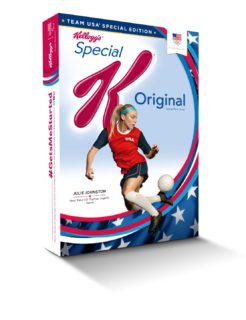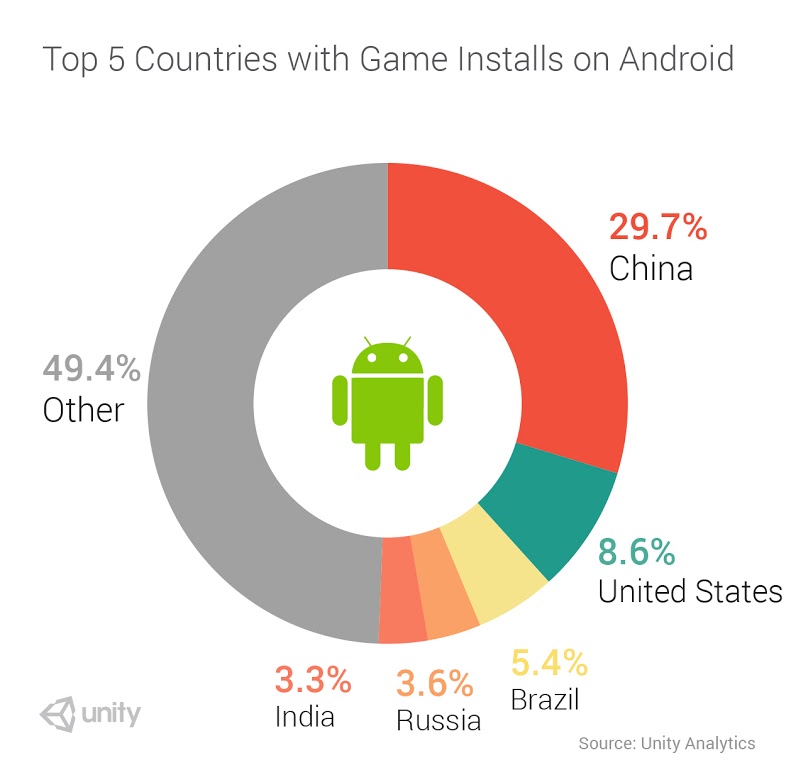The San Diego Comic-Con 2016 is fully underway, and thousands have made their way to the sunny city to learn the latest about their favorite movies, TV shows and comic books.
However, brands are also there in droves, hyping their latest products and sponsoring a number of events for fans. Here’s a rundown of the many companies with mega-presence at this week’s event:
Conan O’Brien, AT&T, Funko and Snickers
Conan O’Brien is bringing his TBS talk show to Comic-Con for the second year in a row, featuring guests from such programs as Silicon Valley and the upcoming Suicide Squad film. For good measure, he’s also got some brands to help promote the event.
Funko produced a series of limited edition Conan figurines, advertised on a large banner on a hotel adjacent to the San Diego Convention Center. These will be handed out to guests and given out via social media, just as they were last year, and feature the talk show host dressed as a Star Wars Stormtrooper, Superman, a Ghostbuster and the Joker from Suicide Squad.

Additionally, two other brand partners are in tow helping Conan along—Snickers and AT&T. Snickers is working with TBS on a Satisfaction Station at the Petco Park Interactive Zone, where fans can dress up and have pictures taken as superheroes, then get their own custom comic book covers.
Meanwhile, AT&T is bringing Conan’s nightly talk show to virtual reality, as viewers can use CONAN360 VR to watch episodes of the show from several interactive angles. The tech was demonstrated last night on the show, with co-host Andy Richter giving it a try.
“Comic-Con is a unique opportunity to reward fans with access to their favorite shows and on-air personalities, and our sponsors are elevating this connection through even more engagement opportunities,” said Jennifer Cohen, senior vice president of entertainment content partnerships, Turner Ignite. “These multi-faceted partnerships not only bring value to fans of TBS and Conan, but also drive deeper consumer interaction, and in turn, business results for our brand partners.”
TCL and Anchor Bay
The electronics manufacturer has teamed up with IMDb to host convention coverage aboard a yacht with writer/director/podcaster Kevin Smith hosting.
TCL will serve as a promotional partner for the three-day event, featuring a Refresh and Recharge lounge with TCL 4K televisions. In addition, Anchor Bay will host a Blu-Ray screening lounge, along with an interactive photo booth featuring props from its many shows provided by Amazon’s Geek Boutique.
Sanrio / Hello Kitty
In addition to hosting its own booth on the show floor, Sanrio is also launching a new brand called Hello Sanrio at Comic-Con this week. With it, the company is hoping to reach out to fans through a number of new mediums and unique products such as a clear vinyl bag filled with Hello Kitty characters.
“The introduction of Hello Sanrio is an exciting evolution in Sanrio’s history—a history that’s rooted in fostering social communication, connecting people and nurturing friendships,” says Jill Koch, SVP of brand management and marketing at Sanrio, Inc. “Hello Sanrio adds to this rich history by creating a world in which Sanrio’s fans can engage and interact with one another and with our expansive roster of characters through a suite of apps, unique digital content and supercute products.”

In addition, the company will host a special Hello Kitty Café Food Truck, which is located in the Petco Interactive Zone. It features, as you may have guessed, Hello Kitty themed snacks and drinks.
HBO
In addition to hosting a Game of Thrones panel tomorrow, HBO is also has a special House of Black and White Hall of Faces experience on the show floor. Additionally, fans can flock to 628 L Street (across from the Omni Hotel) to their pictures taken so that their faces can appear on a Hall of Faces portrait via a custom app. That’s not all. A Melisandre’s Flames exhibit, created with OC Dream holographic technology, will also be available, along with the Iron Throne and other props from the show, such as Arya’s Sword and Waif’s costume. The first 500 attendees of each day will also score an exclusive Funko figurine, designed exclusively for Comic-Con by artist Robert Ball.

To top it off, HBO is hosting a Scavenger Hunt, giving attendees a chance to tackle challenges both on and off the show floor in the hopes of winning a special prize pack worth $200. USAOpoly will also take part, hosting a special Clue: Game of Thrones Experience booth.
Sony and Lyft
With the Ghostbusters reboot in theaters, Sony continues to promote the film at San Diego Comic Con using a special promotion from Lyft. Fans lucky enough to be haunted by the Lyft app’s Ghost Mode can use it to order an ECTO-1 car, like the one in the film. Those that are able to secure a Ghostbusters-themed car will ride for free, but the company warns that they “can’t guarantee they won’t be spooky!”
NBC
The network will host its own event in Gaslamp Square, across from the Convention Center, where fans can experience activities based on upcoming shows such as Timeless and Emerald City, including free frozen yogurt and a variety of giveaways.
Amazon
The mega company will have Comic-Con presence with a special exhibit over on Harbor Drive, featuring an exclusive 4D virtual reality experience based on The Man In the High Castle. There will also be life-size characters, behind-the-scenes footage and model sets from its hit show reboot, Thunderbirds Are Go. Fans will also be able to take part in an International Rescue mission, helping keep San Diego safe in the process.
Adult Swim
Taking place just behind the convention center, Cartoon Network is hosting a special Adult Swim On the Green event, where it will have a carnival midway, access to a special Rick and Morty virtual reality game, and nighttime screenings of upcoming shows, including the return of Samurai Jack.
Fox
The television network has plenty of panels lined up, including presentations for returning shows such as 24 and Prison Break, but its main event will take place on the Hilton San Diego Bayfront Lawn. Here, fans can interact with exhibits based on upcoming shows, including Son of Zorn and Rocky Horror Picture Show Live. These include a giant rock wall for climbing, a huge stunt bag to dive into, and custom lip art designs inspired by the world of Rocky Horror. There is also an American Horror Story VR Experience for those that want to get spooked out.
Comedy Central
The network is back, this time promoting South Park. In addition to recreating the small town of South Park, its exhibit stream of all the show’s episodes via Hulu. There is also a Coon and Friends exhibit, where fans can check out items from the Ubisoft video game, South Park: The Fractured But Whole, which releases this holiday. A retrospective gallery will also be available, featuring rare samples from the original pilot.
Warner Bros.
The studio has major presence at this year’s Comic-Con, including panels for Suicide Squad and the next year’s Wonder Woman film. However, it’s also hosting a Batman v Superman: Dawn of Justice Experience at the MLK Promenade, where fans can go on a daily scavenger hunt and take part in exclusive giveaways. The timing is ideal, since Dawn of Justice: Ultimate Edition recently released on Blu-Ray.
The company is celebrating Wonder Woman’s 75-year legacy with an art exhibition featuring the comic book star, in addition to a nighttime exhibit that includes an interactive Invisible Jet that’s lit up during the evening. The DC Comics show floor booth also features costumes from Wonder Woman film.
Microsoft (Xbox One), Sega and Nintendo
Video game companies are having a field day at the event, most of them hosting panels during the four-day convention. However, Microsoft is keeping busy with various events around SDCC, including a special Xbox lounge at Nerd HQ, where players can engage with upcoming titles like Gears of War 4 and Forza Horizon 3, and register to win big prizes, such as an exclusive Gears of War 4 system bundle.
Meanwhile, Nintendo will once again host an open lounge at the San Diego Marriott Marquis & Marina hotel, close to the Convention Center, where fans can play games like Yo-Kai Watch 2 and Metroid Prime: Federation Force, and interact with other exhibits.
Finally, Sega is keeping busy with its mascot, Sonic the Hedgehog, as it’s hosting a number of events over the course of Comic-Con, including a special 25th anniversary party and game demos for Sonic Boom: Fire and Ice. Limited edition merchandise is also available at a number of locations around the hall.
















